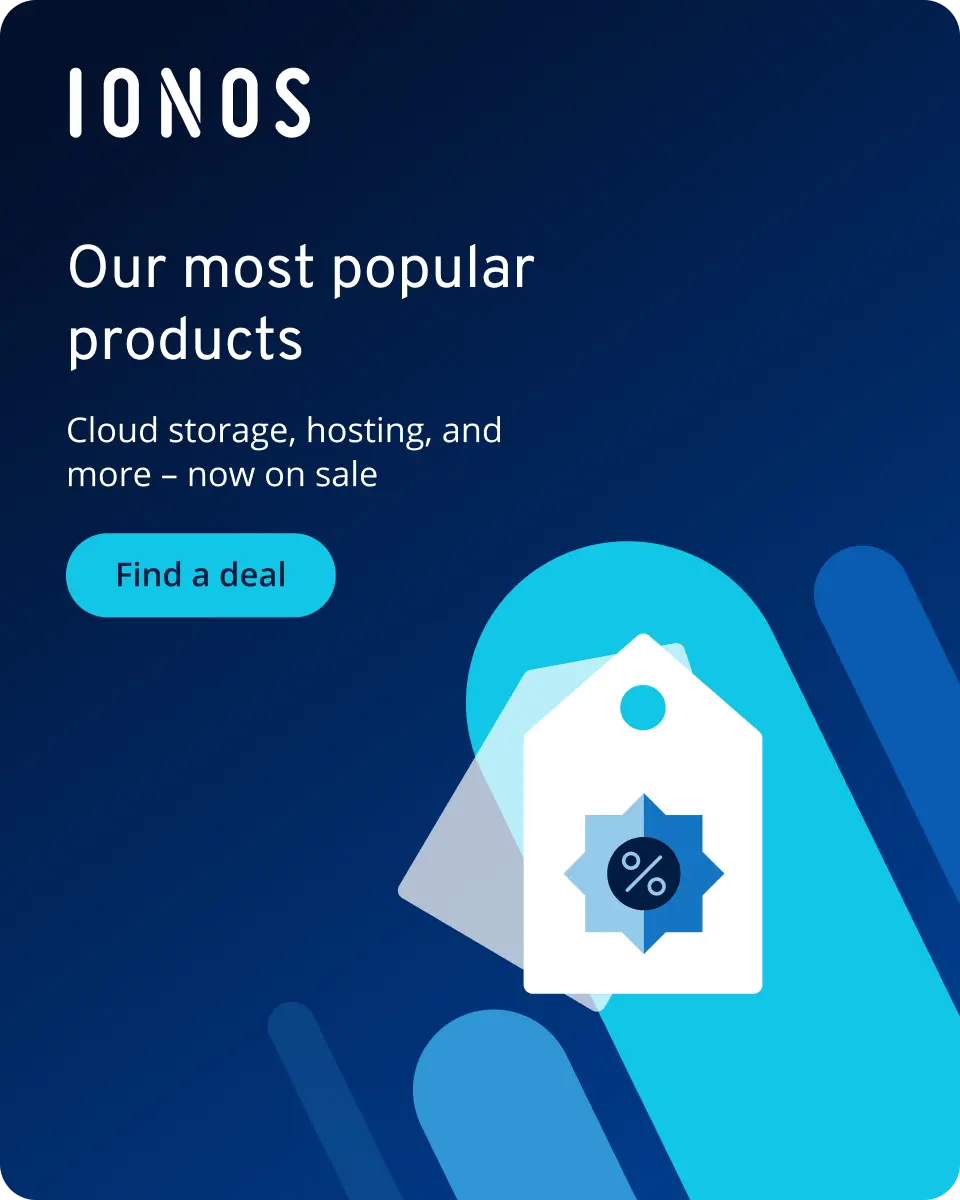What are the 6 best alternatives to DynamoDB?
DynamoDB is one of the most popular and user-friendly databases. Amazon’s serverless solution has many advantages, including being completely managed but it’s still not ideal for every user. You can find out what alternatives there are to DynamoDB here.
- Enterprise-grade architecture managed by experts
- Flexible solutions tailored to your requirements
- Leading security in ISO-certified data centers
What is DynamoDB and what alternatives are there?
The serverless NoSQL solution DynamoDB was developed by Amazon and has been part of the AWS (Amazon Web Services) ecosystem since 2012. A key advantage over many DynamoDB alternatives is that the database management system is offered as a fully managed service. This means users don’t have to worry about security measures or updates—they can simply use the database as needed. This also applies to scaling, which is theoretically unlimited. Additional storage can be added easily without negatively impacting performance or availability. While DynamoDB is not a relational database, it still uses tables to structure data.
DynamoDB has built a strong reputation as a fast, secure, user-friendly, and flexible database management system. However, there are also aspects that may deter some users. This is especially true of its tight integration with the AWS ecosystem, which offers many benefits but can limit compatibility with other systems and environments. In addition, its query capabilities are not as extensive as those of other databases. The high scalability also comes at a literal cost, as this fully managed service can be significantly more expensive. If you’re looking for an alternative to DynamoDB, here are six of the best options.
MongoDB: The NoSQL database with limitless scalability
MongoDB is one of the best-known and most popular databases in the world and is the perfect alternative to DynamoDB. The solution is known for its high scalability and great flexibility. Storing and managing large or growing amounts of data is easy with MongoDB, making it a great option for companies, no matter the size. Structured, semi-structured or unstructured data is stored in binary JSON documents and summarized in collections. The NoSQL database is ideal for web applications, content management or the e-commerce segment and, thanks to the sharing approach, guarantees a high level of reliability and availability. MongoDB offers both free and paid plans.
The advantages of MongoDB at a glance
- Scalable without limits
- Processes structured, semi-structured and unstructured data
- Very flexible
- Powerful query options
- High compatibility
- Easy to use
- Wide range of usage options
- Very fail-safe
Managed MongoDB from IONOS enables you to concentrate on the essentials. From installation to operation and maintenance work, IONOS makes sure you always get the best performance from your data banks.
MySQL: The relational option with high availability
If you want or need to store your data in tabular form, the classic SQL approach might be the better option. One of the best relational databases remains MySQL. It uses the well-known and widely adopted SQL query language and is partially ACID-compliant (Atomicity, Consistency, Isolation, and Durability). The system is well suited for structured data and large data volumes. MySQL’s security architecture is another strong point. This flexible and fast alternative to DynamoDB is open source, although Oracle now also offers commercial versions. Companies like Google, WordPress, and YouTube rely on MySQL either entirely or in part.
The advantages of MySQL at a glance
- Open source
- Very user-friendly
- Committed community
- Partially ACID-compliant
- Good at handling large amounts of data
- Strong query language
- Combination with NoSQL options possible
- Flexible despite relational approach
- High availability and compatibility with many systems, languages and platforms
- Very stable and safe
- Part of the LAMP stack (Linux, Apache, MySQL and PHP)
MariaDB: The evolved MySQL clone
MariaDB is a relational database solution that stands out as an open-source alternative to DynamoDB, particularly due to its openness, stability, and high compatibility. It was launched in 2009 as a direct fork of MySQL, following Oracle’s acquisition of MySQL—which raised concerns in the open-source community about its future development. Since then, MariaDB has evolved well beyond its origins and now offers not only full SQL capabilities but also modern features such as column-based storage engines and support for hybrid workloads. The database is high-performing, versatile, and especially popular among companies that prioritize independence and long-term reliability.
The advantages of MariaDB at a glance
- Open source and actively developed
- Broad compatibility with MySQL projects
- Supports both transactional and analytical workloads
- SQL-based queries with extensive functionality
- High stability and scalability
- Flexible storage options with various engines
- Licensed under GPLv2 for professional use
PostgreSQL: A flexible solution for structured data
PostgreSQL also follows a relational approach and is therefore similar to MySQL. As an alternative to DynamoDB, this object-relational database—first released in 1996—is especially attractive due to its high flexibility. While PostgreSQL works with tables, it also supports non-relational data types. It integrates smoothly with other databases, which makes it particularly popular in cloud environments and for e-commerce applications. Although PostgreSQL is now considered a classic, this open-source system continues to be actively developed, offering modern solutions for today’s needs. Companies like Apple, Instagram, and Spotify value these capabilities.
The advantages of PostgreSQL at a glance
- Open source
- Extremely flexible
- High compatibility even with NoSQL systems
- Also supports non-relational data types
- Versatile in use
- Committed community
- Very safe and robust solution
- Outstanding data analysis
Firebase: The DynamoDB alternative from Google
Amazon is not the only huge tech company with a powerful NoSQL database in its portfolio. Acquired by Google in 2014, Firebase has since been significantly expanded. The development platform now includes 18 services, some subject to a fee, including an integrated database management system, which is particularly suitable for mobile and web applications. This system is characterized by extremely low latencies. Data is stored on different nodes to ensure high availability. The database also offers an offline mode, which makes use of numerous other Google services. Firebase is available in multiple versions, from the free trial version to paid plans based on what you need.
The advantages of Firebase at a glance
- Low latency and fast read and write operations
- Optimized for mobile use
- Good availability and reliability through sharding
- Benefits from numerous Google services
- Strong cloud connection
- Cross-platform and widely compatible despite being embedded in the Google ecosystem
- Professional support
- Wide range of applications
Apache Cassandra: Open source and ideal for big data
The column-oriented NoSQL database Apache Cassandra has been one of the market leaders for many years. This open-source alternative to DynamoDB was first released in 2008. It uses CQL, an especially efficient query language modeled after SQL, making it relatively easy to learn. Thanks to its extensive horizontal scaling capabilities, Apache Cassandra offers users a wide range of management options—even with growing or large volumes of data. Because the system distributes data across multiple nodes, it is highly fault-tolerant and delivers particularly fast query performance. Companies like JPMorgan, Netflix, and Apple rely on this user-friendly database management system, which also features robust security functions.
The advantages of Apache Cassandra at a glance
- Open source
- Horizontally scalable, ideal for large or increasing data volumes
- Additionally vertically scalable
- CQL as an effective query language
- Fail-safe
- High availability of data
- Strong performance
- Meets ACID requirements (Atomicity, Consistency, Isolation, Durability)
- Very flexible

